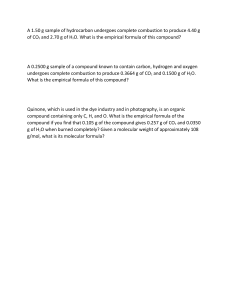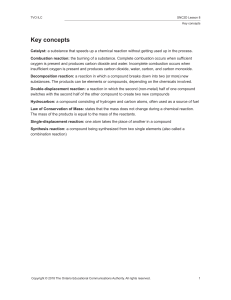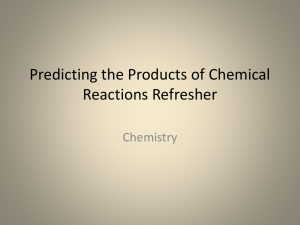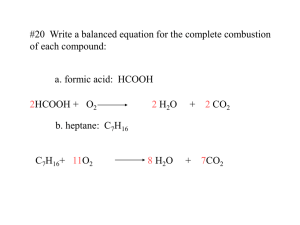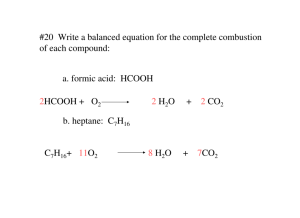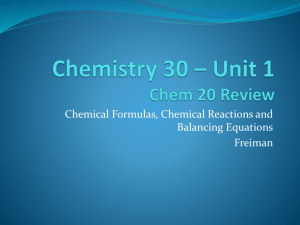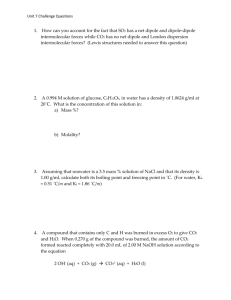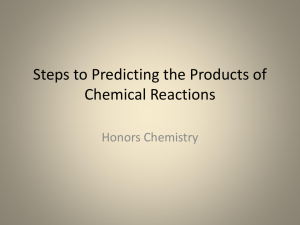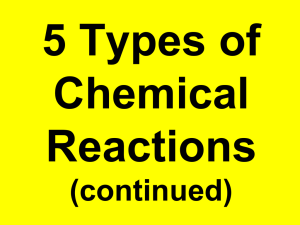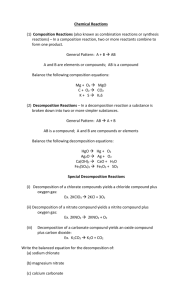Types of Chemical Reactions: A Chemistry Guide
advertisement
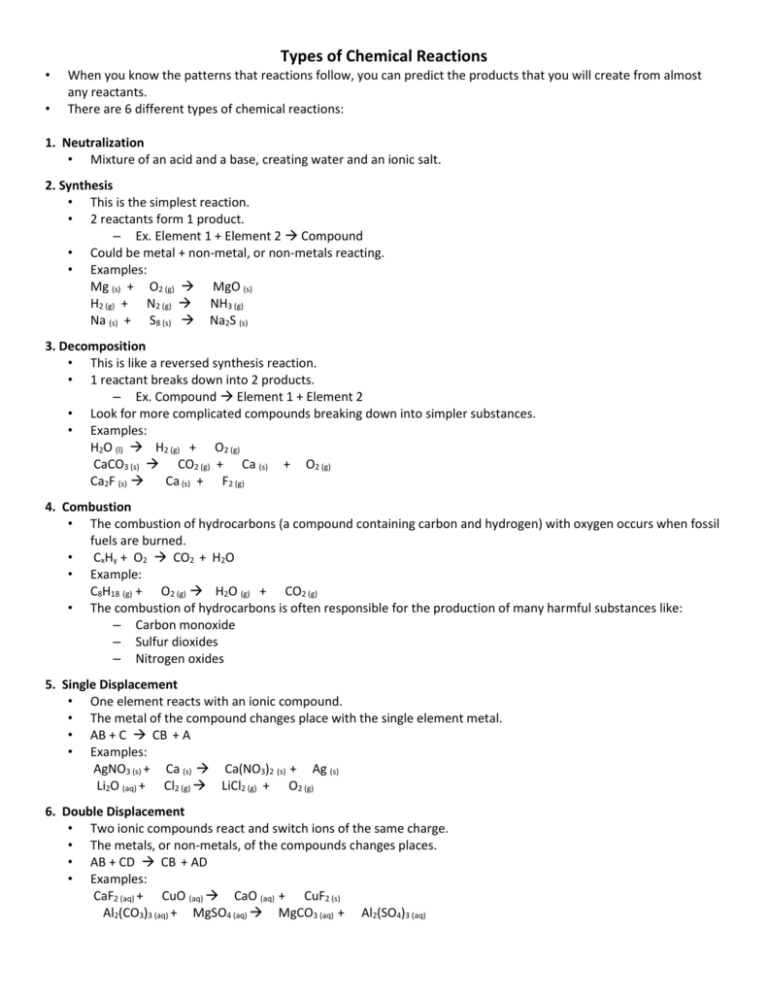
Types of Chemical Reactions • • When you know the patterns that reactions follow, you can predict the products that you will create from almost any reactants. There are 6 different types of chemical reactions: 1. Neutralization • Mixture of an acid and a base, creating water and an ionic salt. 2. Synthesis • This is the simplest reaction. • 2 reactants form 1 product. – Ex. Element 1 + Element 2 Compound • Could be metal + non-metal, or non-metals reacting. • Examples: Mg (s) + O2 (g) MgO (s) H2 (g) + N2 (g) NH3 (g) Na (s) + S8 (s) Na2S (s) 3. Decomposition • This is like a reversed synthesis reaction. • 1 reactant breaks down into 2 products. – Ex. Compound Element 1 + Element 2 • Look for more complicated compounds breaking down into simpler substances. • Examples: H2O (l) H2 (g) + O2 (g) CaCO3 (s) CO2 (g) + Ca (s) + O2 (g) Ca2F (s) Ca (s) + F2 (g) 4. Combustion • The combustion of hydrocarbons (a compound containing carbon and hydrogen) with oxygen occurs when fossil fuels are burned. • CxHy + O2 CO2 + H2O • Example: C8H18 (g) + O2 (g) H2O (g) + CO2 (g) • The combustion of hydrocarbons is often responsible for the production of many harmful substances like: – Carbon monoxide – Sulfur dioxides – Nitrogen oxides 5. Single Displacement • One element reacts with an ionic compound. • The metal of the compound changes place with the single element metal. • AB + C CB + A • Examples: AgNO3 (s) + Ca (s) Ca(NO3)2 (s) + Ag (s) Li2O (aq) + Cl2 (g) LiCl2 (g) + O2 (g) 6. Double Displacement • Two ionic compounds react and switch ions of the same charge. • The metals, or non-metals, of the compounds changes places. • AB + CD CB + AD • Examples: CaF2 (aq) + CuO (aq) CaO (aq) + CuF2 (s) Al2(CO3)3 (aq) + MgSO4 (aq) MgCO3 (aq) + Al2(SO4)3 (aq)

